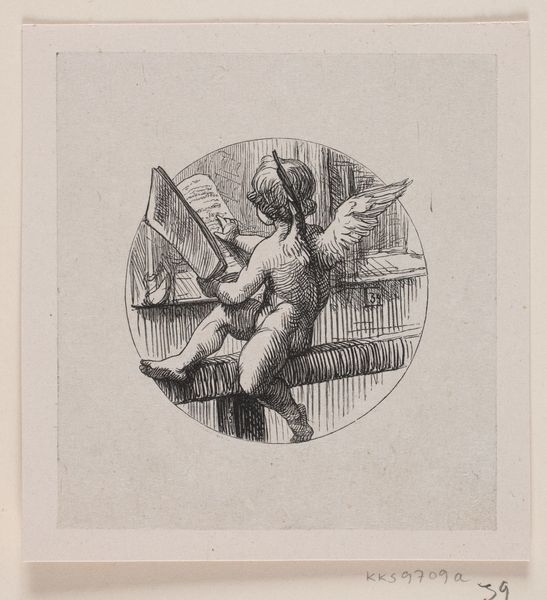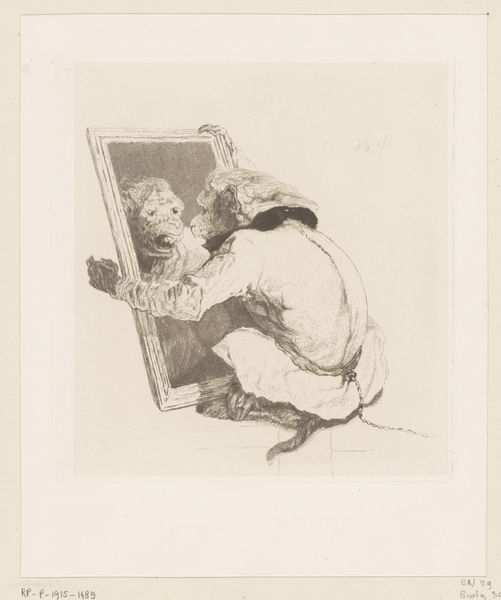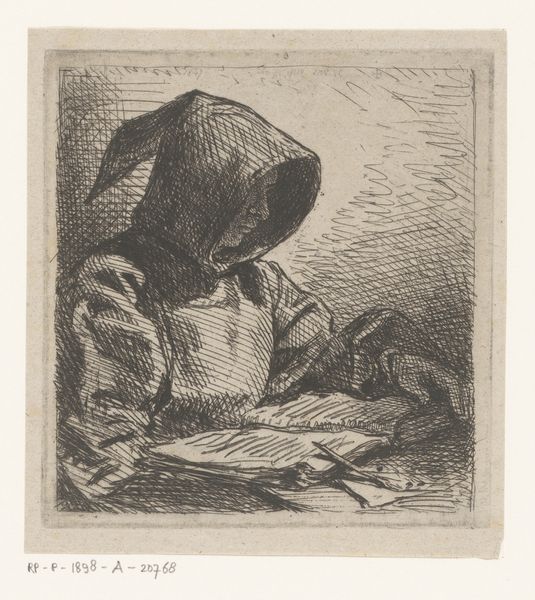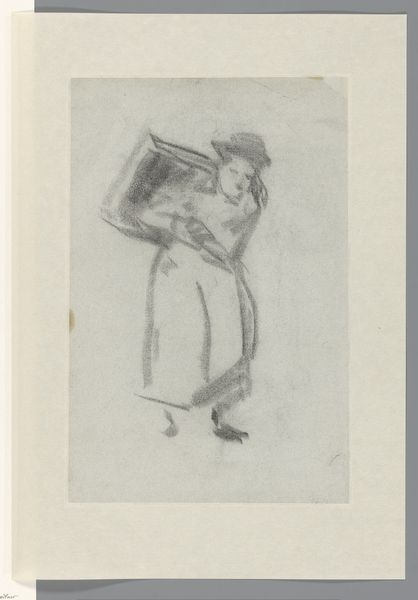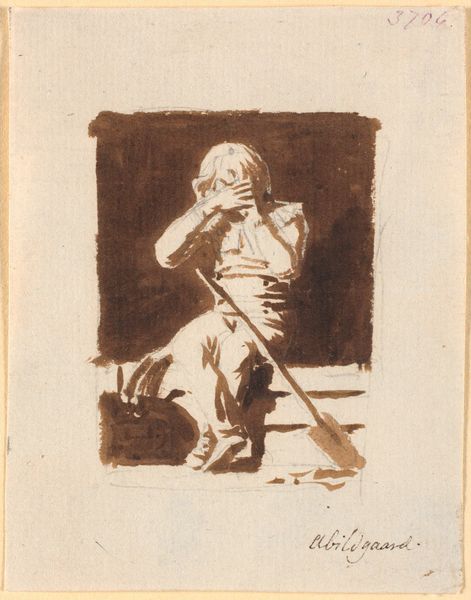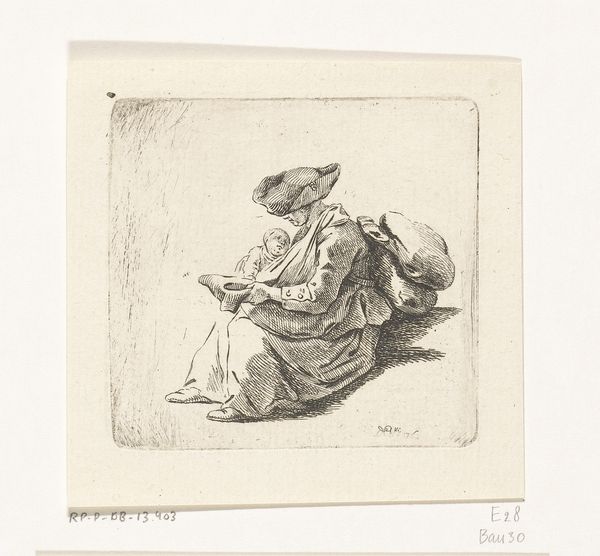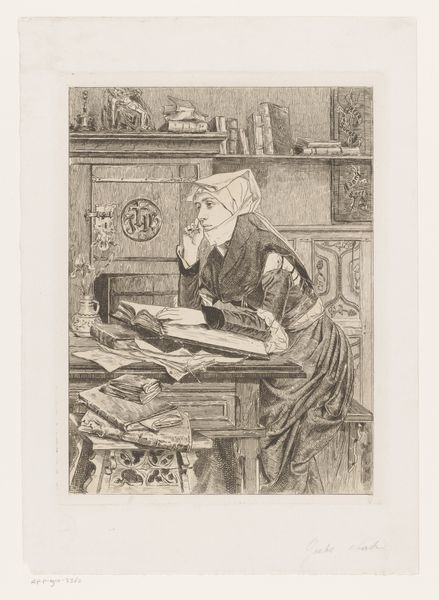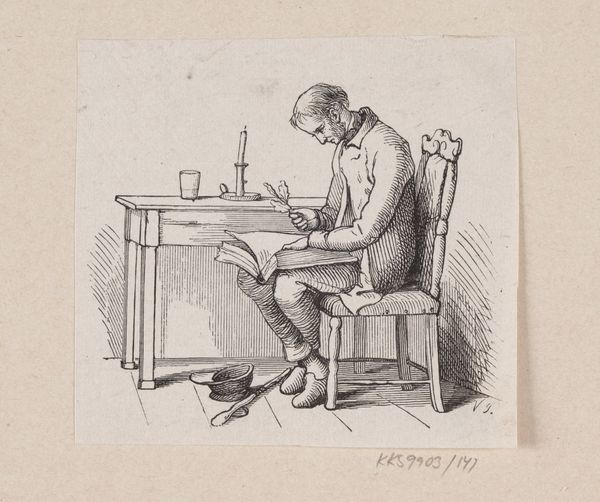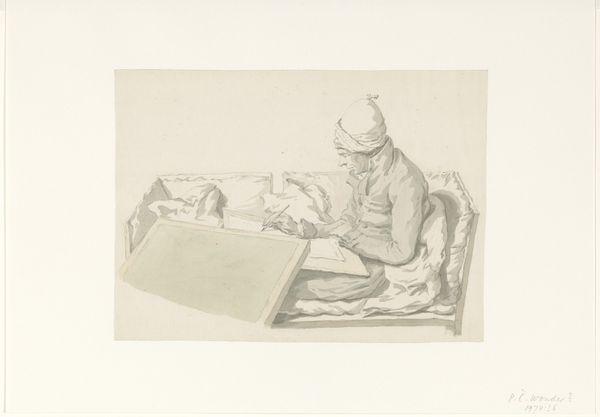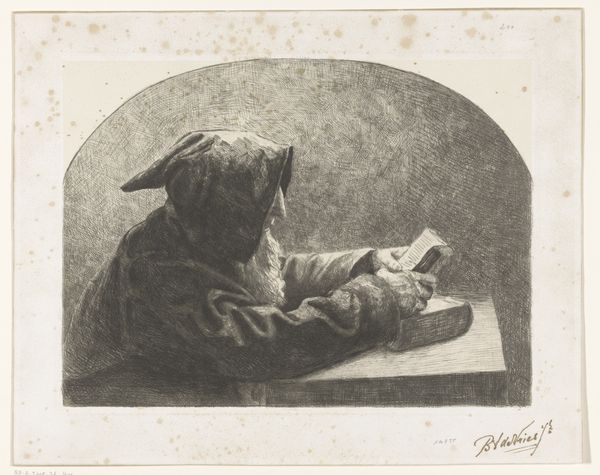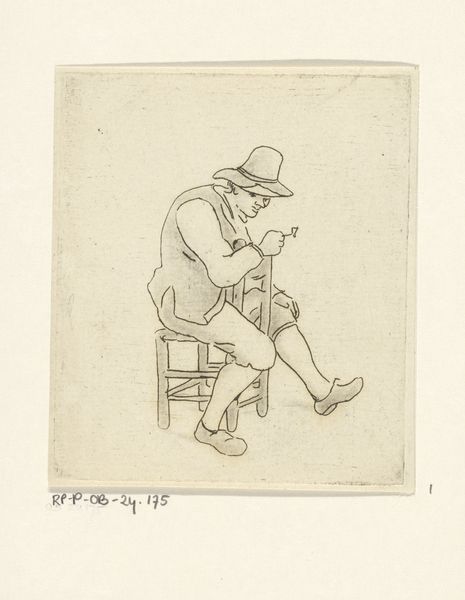
drawing, print, ink, woodcut
#
portrait
#
drawing
# print
#
ink
#
woodcut
#
orientalism
Dimensions: 73 mm (height) x 74 mm (width) (bladmaal)
Editor: This intriguing print, "En tyrkisk (?) dreng med en skrifttavle" or "A Turkish (?) Boy with a Writing Board," created between 1813 and 1872 by Andreas Flinch, uses ink and woodcut techniques to portray a young boy engrossed in what appears to be a lesson. There is an orientalist quality to the style. The simple black ink contrasts against the beige paper, focusing the viewer's attention on the boy and his studies. What story do you think the material elements tell us? Curator: The use of woodcut and ink, readily available and relatively inexpensive materials, signals an important aspect of production. We often think about the artist, but what about the craftsman who created the woodblock? It speaks to the wider system of artistic production and distribution. This image, due to its medium, might have been widely circulated, furthering the exoticization and consumption of the "Orient" through easily reproducible images. What does this availability say about how such cultures were perceived at the time? Editor: That’s a perspective I hadn’t considered – the consumption of "Oriental" imagery by a possibly European audience. I guess it wasn’t necessarily about deep understanding, but perhaps more about... spectacle? Curator: Precisely. And consider the "writing board" itself. It’s not simply a tool for learning; it’s a cultural artifact presented, consumed, and perhaps misunderstood. The materiality and circulation are inseparable from its social and historical context, reinforcing certain power dynamics through its very existence. Editor: So, it's not just a simple portrait of a boy, but a complex interplay of material conditions and cultural perceptions… that were also being commodified? Curator: Exactly! Looking at the materials and their deployment brings a new depth of understanding. It challenges us to look beyond the surface aesthetics and question the networks of labor, circulation, and consumption that shaped its creation and reception. Editor: That's really made me think differently about the art production. Thanks for sharing that! Curator: Likewise, your fresh observations offered great counterpoints, so thank you.
Comments
No comments
Be the first to comment and join the conversation on the ultimate creative platform.

